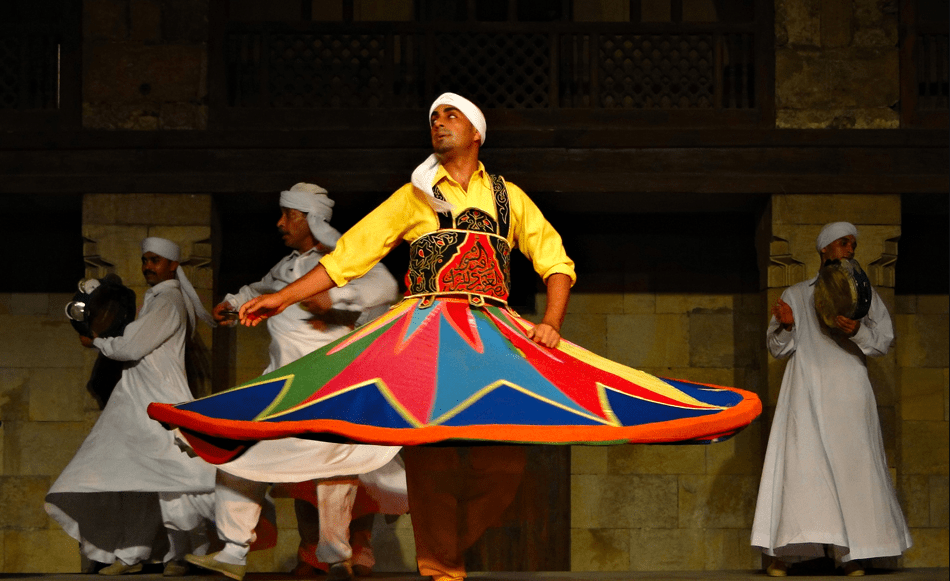Arab folk dances aren’t just performances—they’re part of the culture. From Dabke in the Levant to Tanoura in Egypt, every region moves to its own beat. And while they might look similar from the outside, each one carries its own history, energy, and meaning. Let’s take a look at a few of these iconic dances and how they continue to evolve today.
1. Dabke: Lebanon, Palestine, Syria, and Jordan on One Beat
In Lebanon, Palestine, Syria, and Jordan, Dabke is a statement of unity. Originally, it was performed as a practical way to secure roofs and tents, but over time, it became a staple at weddings and community events.
Dancers hold hands and form a line, moving in sync with the beat of the tabl and mijwiz. The stomps aren’t just part of the routine—they represent strength and a deep connection to the community. Because of that, Dabke serves as a reminder of the power of togetherness, showing that even in tough times, people can come together and move forward as one.
2. Belly Dancing: Elegance and Expression in Egypt
Moving from the collective energy of Dabke, belly dance brings a more individual and intimate form of expression. With origins that trace back to ancient rituals, belly dance was once part of spiritual practices.
Over time, it evolved into the glamorous art form we recognize today—an essential feature of Egyptian cinema and a beloved performance at weddings across the Arab world.
Unlike Dabke’s group dynamic, belly dance is all about controlled isolations. The dancer’s movements, often centered around the hips, stomach, and chest, are both graceful and powerful.
3. Ardah: Stories of Valor and Pride in Saudi Arabia
In Saudi Arabia, the Ardah stands as a living testament to the country’s history of valor and pride. Traditionally performed by two lines of men facing each other, each dancer holds a sword in one hand and claps to the beat with the other.
The rhythm of the drums, combined with the poetic chanting, tells stories of battles and victory. In recent years, the Ardah has been reimagined as a symbol of national identity, gaining popularity at national celebrations, such as the Janadriyah Festival.
4. Yowla: Precision and Agility in the UAE
In the United Arab Emirates, Yowla is a dance that captures both strength and grace. Derived from the ancient Ayyala dance, which highlighted the courage and skill of warriors, Yowla has grown into a performance that showcases precision and agility.
Performers, known as yawil, twirl imitation rifles or canes overhead, creating a spectacle of rhythm and dexterity. The dance is not only about physical prowess but also about showmanship, blending traditional chants with contemporary music.
5. Tanoura: Spirituality in Egypt
In Egypt, the Tanoura dance offers a display of spirituality and tradition. This folkloric dance traces its origins to Sufi practices and is heavily influenced by the idea of spiritual detachment and transcendence.
The dancer spins in circles for long periods, symbolizing the soul’s journey toward perfection. As the brightly colored skirt twirls around them, one hand reaches for the sky, while the other stays grounded, representing the balance between heaven and earth.
Arab Dances Keep Culture and History Alive
No matter the style, traditional Arab dances do more than entertain—they carry culture, memory, and meaning. Whether tied to celebration, community, or faith, these dances keep history present, connecting people across generations through movement and rhythm.
WE ALSO SAID: Don’t Miss…From Wedding Mirrors To Dance Bubbles: Elevate Your Arab Wedding With These 5 Creative Twists



